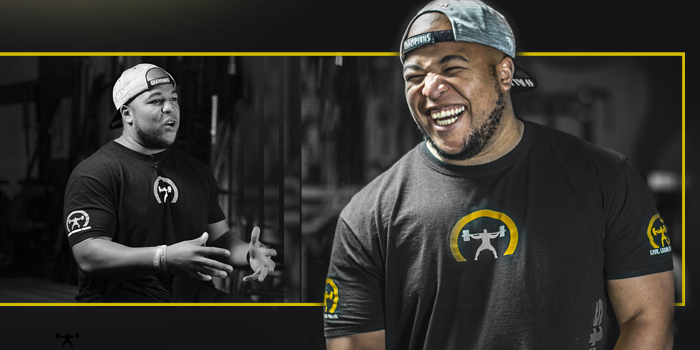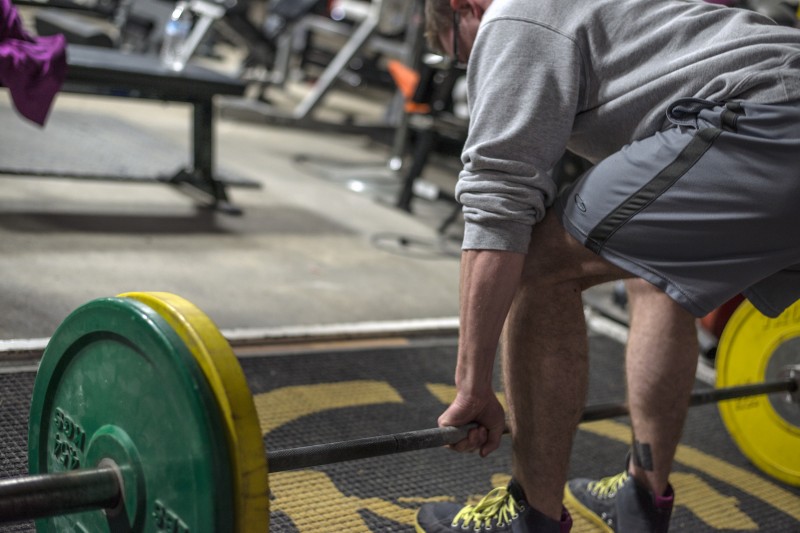
The other day I was mindlessly scrolling through Instagram when I came upon the greatest post I’ve seen in the last five years. Nate Harvey posted a slide from a presentation he was giving that I assume talked about dynamic effort method versus Olympic lifts. On this slide, it explained the difference and effectiveness of using the dynamic effort method over using Olympic lifts. I thought he made some extremely good points. Reading this got my brain cranking to put these thoughts on paper. There are those out there that don’t even know what dynamic effort is, let alone how to implement it into their programming. There are also those who have a misconception as to what dynamic effort really may be. I know for me personally, I thought anytime you put chains on it was dynamic effort work. Not so much.
Dynamic effort can pretty much be summed up (in layman’s terms) as fast, explosive movement. Now, this seems very simple, but people get lost somewhere between "fast and explosive" and "movement." I’ve seen dynamic effort quickly (no pun intended) turn into rep effort work. This happens when people don’t account for band tension or the weight of chains and just throw them onto the barbell and call it dynamic. Or this is when someone wants to introduce repeat hurdle hops, but their players are extremely slow getting off the ground between jumps. Just because you introduce chains, bands, or hurdles to a movement doesn’t make it dynamic. To be dynamic the movement has to move fast.
RECENT: S&C Programming Considerations for College Football Freshmen
Now that we know what dynamic effort is, let’s talk about why we use dynamic effort and it’s application to sport, more specifically the sport of football. Now, I have seen two different ways this happens in the football setting. For the sake of this article I want to point out the way I use the terms "max effort" and "rep effort." Max effort for me is your primary movement of the day. Rep effort work is your accessory work, including any prehabilitation movements. Most schools I have been around do their dynamic effort work first then progress into their max effort work and rep effort work. Why? The reason behind this train of thought is purely getting the central nervous system (CNS) firing before exposing it to a heavier stimulus. Others will do their dynamic effort after doing their rep effort work. This train of thought is most often the same. Does that mean your CNS isn’t fired up before doing max effort if you chose max effort first? No, because there is a warm-up before you lift, specifically to warm up the CNS. Some may say doing max effort first fatigues your dynamic effort work proceeding it, while others will say doing max effort first gets your CNS primed to move the dynamic effort fast. Either way works; it is more of a preference. After years of doing dynamic effort before max effort, I was hesitant the first time I saw them switched, but it worked out just fine.
Now the question is how dynamic effort applies to football. At the end of the day, football is about repeat bouts of 100% effort or maximum power output. We all know power is force multiplied by velocity (power = force x velocity). We lift heavy to increase force. We lift fast to increase velocity. Though it is fair to say that as long as force increases and velocity stays the same power output will increase, this is only true to a certain extent. There always comes a point where gaining strength isn’t as big of a determining factor as speed. This is not to say getting stronger won’t help, but maybe your time needs to be allocated towards something else as well. This is where dynamic effort is effective. In an attempt to be faster, it is common sense that one has to move fast. Therefore, moving heavy weight slow is not always the answer. Of course getting stronger never hurts, but it may be more adventitious to work on velocity over force once a player reaches a certain threshold (or simultaneously work on both).
So I’m sure the big question everyone is wondering at this point is this: what does this look like in a football program? In a stereotypical dynamic effort, max effort, repetition effort setup this would progress as a velocity-based Olympic movement, a priority movement (typically bench or squat), and then your accessory and prehabilitation work. In the max effort, dynamic effort, repetition effort setup, it would progress as priority movement, speed movement (speed squats, speed bench, or even clean variation), and then the accessories and prehabilitation work. Both these layouts seem almost exactly the same in the context of this article, but in person may look completely different.
RELATED: Speed Work — Are You Doing It Correctly?
From personal experience, I know that while some use velocity-based cleans to achieve dynamic effort, others use chain box squat or a contrast of an Olympic variation paired with a jump variation. The results are the same if the percentages are light enough to move the bar to the desired speed (which would be "fast" in meathead terms). If the bar speed isn’t fast then you’re pretty much wasting your time in terms of achieving dynamic effort. My personal belief through trials and failure is that on main movements (bench, squat, and cleans) you should keep the percentages around 50% to 60%, depending on sets, reps, and the point in training. On variations of movements (incline press, box squat, and clean pulls) the percentages have to drop to somewhere around 45% to 55%. Now, depending on your athlete, the percentages may be a tad higher or lower. There is no one way that fits all. Sometimes the CNS is firing on full tilt, while other days the CNS is barely dragging along. This can even vary day to day and hour to hour. So with that in mind, don’t be afraid to lighten the weight on the bar of your athletes if need be in order to move the bar "fast."
I will end this article by saying that there are many ways to skin a cat. When it comes to speed or dynamic effort, common sense needs to be at the forefront. If the athlete isn’t moving fast or the bar speed is abysmal, make the appropriate changes. If you are prescribed 50% but the bar speed looks more like 90% then the weight needs to be dropped — common sense. Dynamic effort training should look dynamic. As the athletes adapt to the stimuli, they can start adding weight as long as the bar speed stays up. The speed of the bar will dictate the weight used. Some athletes can progress to higher percentages faster, while others will have to be slow cooked longer. This is where you will need to be a coach. If you’re not getting the desired effect then change the stimulus. Maybe contrasting clean pulls and box jumps won’t work for your athletes, so you have to try something else. It could be chain box squats. If the athlete cannot handle band tension then try using just the bar weight. Dynamic effort is a method, not a protocol. And last time I checked, most protocols have a panic button when changes need to be made. Do what works for your situation and do it well!











